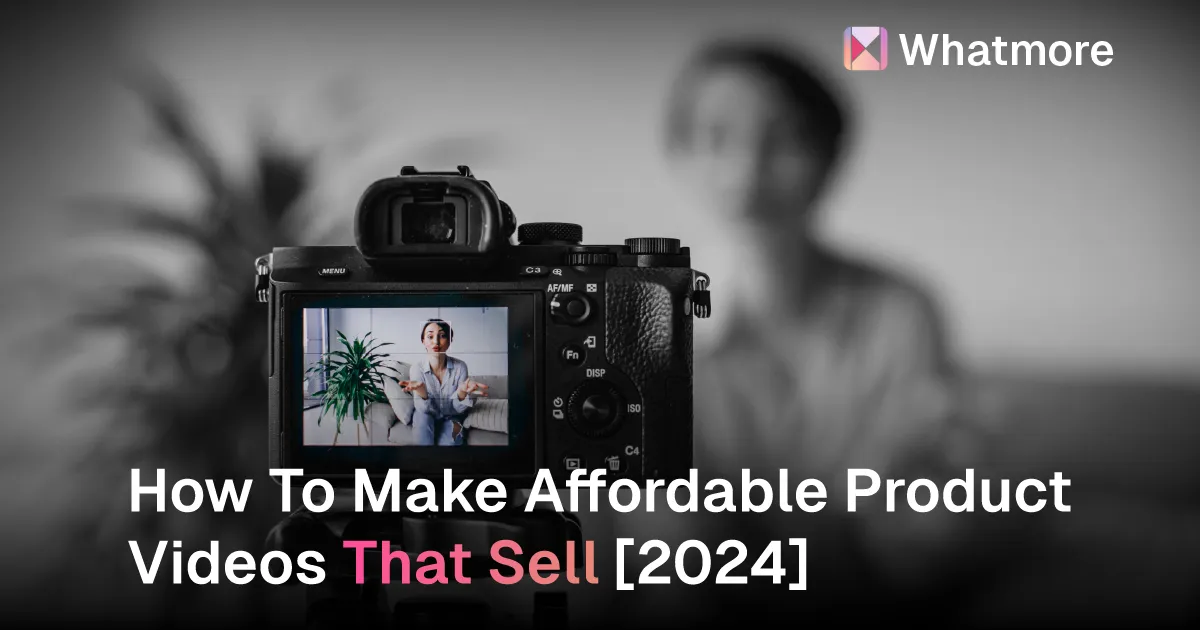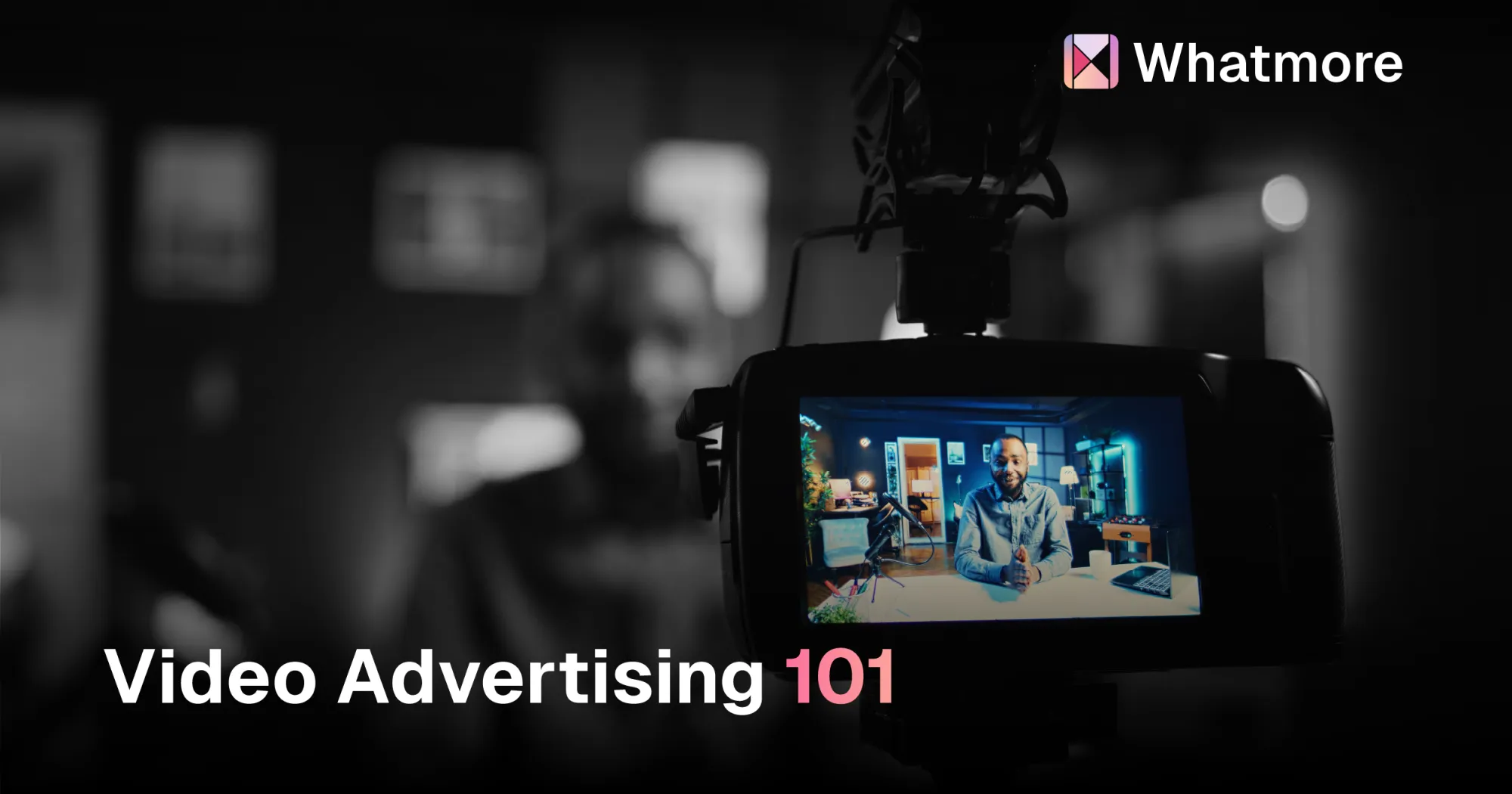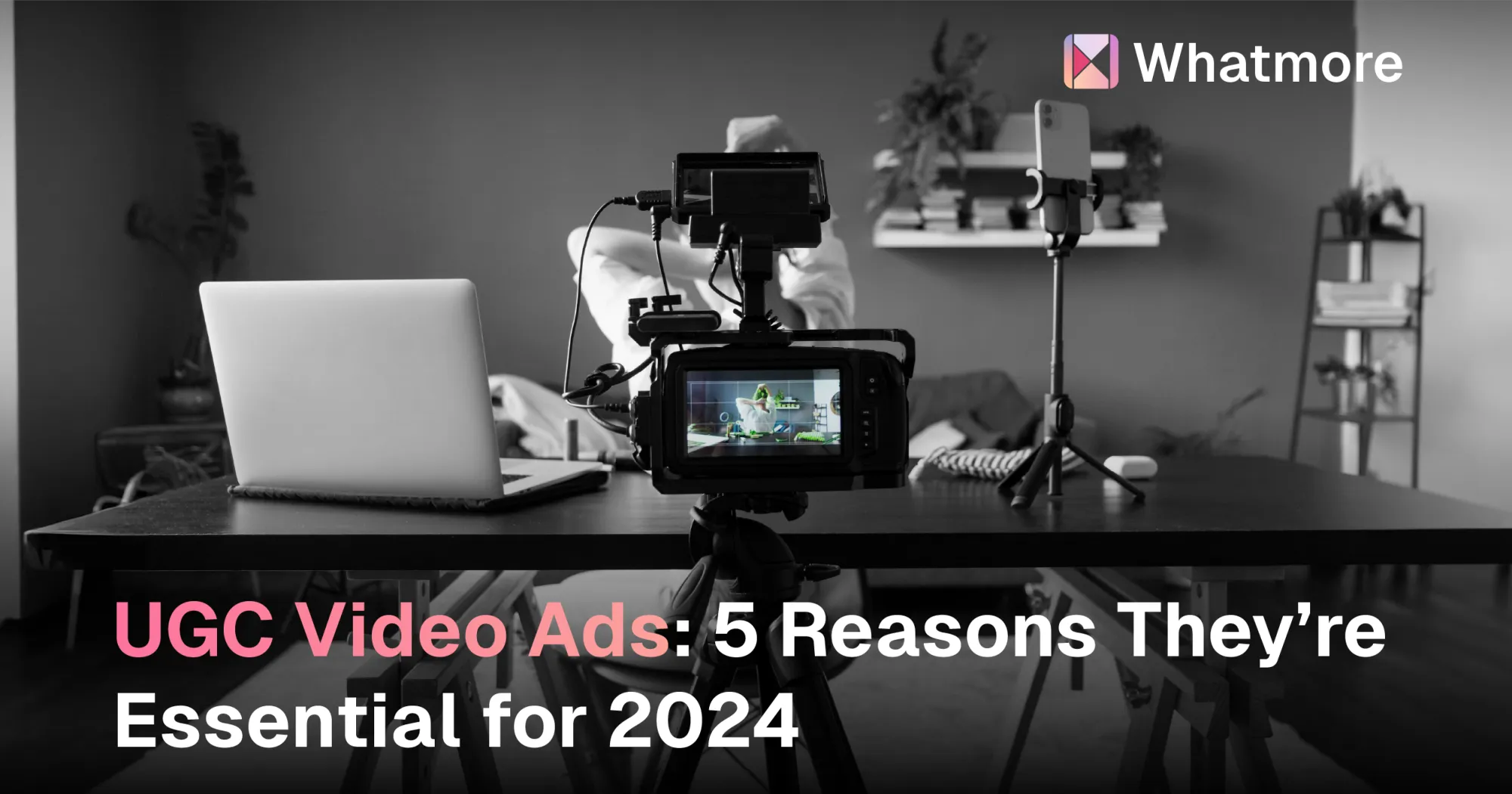On average, a product video will cost you somewhere between $1,000 and $5,000.
That’s a lot. And if you're just starting out with your e-commerce store, investing that much without a guaranteed ROI can feel like a big risk.
So, the only sane option left is to create product videos yourself. At this point, you might have a few questions:
- Can I make product videos without any product video production experience?
- Do I need to buy any expensive video tools?
- Is my smartphone enough to record product videos?
- Do I need to learn video editing?
- Where do I market these product videos?
As a store owner with limited video editing and marketing experience, finding answers to these questions can be tough.
In this article, we’ll answer these questions and show you how to create budget-friendly product videos that have a high chance of converting, backed by solid data.
Why Even Have Product Videos?
Product videos are the closest possible option to physical shopping.
Imagine you're shopping online for a smartwatch. You've done your research, narrowed down your options, and are very close to making a purchase.
Which e-commerce store would you buy it from?
- A store that shows images of the smartwatch
- A different store with the same smartphone model, but with both images and a product video
At its core, a product video is all about building trust. In fact, around 47% of marketers invest in product videos for the same reason.
Product videos are also hard to make, time-consuming, and expensive (especially if you're working with video agencies).
Because of these challenges, not many e-commerce stores invest in them. On the flip side, stores that do have them naturally stand out in the marketplace.
How To Make A Product Video In 6 Simple Steps
Now, it’s time to make a product video for your e-commerce store. To do this:
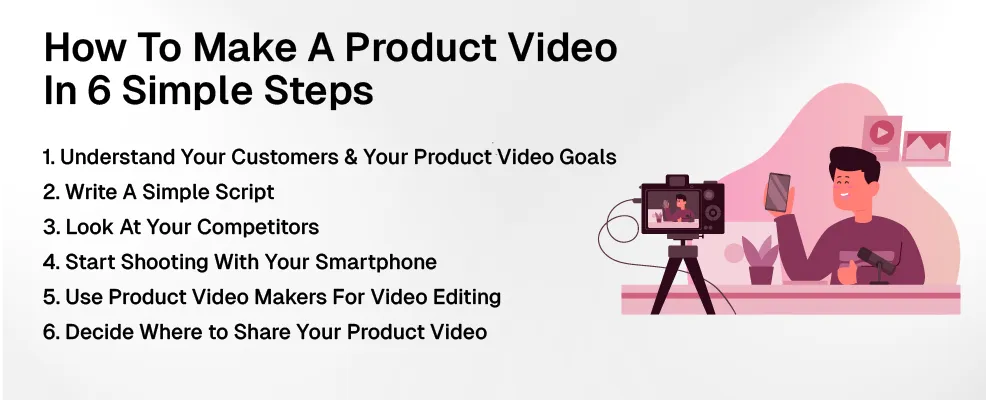
1. Understand Your Customers & Your Product Video Goals
While creating a product video, you should think carefully about who your product is for.
Putting yourself in your customer’s shoes and understanding how your product benefits them will help you:
- Highlight the right features: Helps you highlight features that matter most to your customers.
- Choose the right tone: Is your audience looking for something fun and casual, or do they need a more professional and informative product video?
- Make it relatable: Helps you show the product being used in real-life situations that reflect your customer’s daily life and pain points.
After this, outline what you exactly want to achieve with your product videos.
While the ultimate goal of any promotional campaign is to – boost sales, it's important to consider which stage of the buying process your customer is in when creating a product video.
This helps you create a product video that better targets each buyer persona. To do this, you need to ask yourself the following questions:
- Is your customer discovering your product for the first time?
- Do they already know your product and just need more details before deciding?
- Are they comparing your product with other options to make a final choice?
- What concerns or questions might they have about your product?
This also helps you think more deeply about your product's benefits and your customers' needs. And in the next step, this will help you write a tight script.
2. Write A Simple Script
Picking up your smartphone without a clear idea of what to shoot will just waste your time and energy.
A script acts like a blueprint for your product video.
You don’t need to be a seasoned writer to create a great script. That’s because a product video script doesn’t have to include dialogue or follow a traditional writing format.
For example, your script could include things like:
- Key points: Write down the main features and benefits you want to highlight in the video.
- Visual cues: Note what visuals you want to show at each point. For example, "Show the vacuum cleaner on a carpet, then switch to it on a hard floor."
- Camera angles: Explain how you want to position your camera. For example, "Start with a close-up of the product, then zoom out to show it in action."
- Product video duration: Estimate how long each section should take. This will help keep your video concise and engaging.
- CTA: Remind yourself to include a prompt for viewers, like "Visit our website for more details" or "Order today!"
This will make the process of creating a product video much easier and more focused.
3. Look At Your Competitors
If you're struggling to write a script or come up with ideas for your product video, taking a reference from your competitors can provide the needed inspiration.
However, this is very different from simply copying their product video.
When you research enough product videos from different competitors, you will naturally spot common elements, styles, and techniques that most of them use.
Understanding your competitors helps you understand what works and then put your own unique spin on it. This way, you create something fresh that reflects your brand's personality.
4. Start Shooting With Your Smartphone
This is the most important part and probably the reason you're here.
When shooting a product video with your smartphone, here are a few key things to focus on:
- Keep your product video stable without too much shaking.
- Your product should be shot from every angle.
- Good lighting is important. Make sure your customers clearly see every part of your product.
All of these points make sure that your customers have a good look at your product. This helps them see that the product you’re selling is legit and this, in turn, helps build their trust.
Here’s how you can do all of that (and more):
1. Use What You Have for Stabilization
A steady shot is crucial, and while tripods are ideal, you don’t need to buy one. Try these alternatives:
- Stack of books: Prop your phone against a stack of books to keep it steady.
- Wall support: Lean your phone or your body against a sturdy surface like a wall or table to reduce shake.
Additionally, you can try holding your phone with both hands and keeping your elbows close to your body for extra stability.
2. Cover Every Angle
Show your product from different perspectives to give potential buyers a complete view. Instead of moving the product, move around it:
- Slow movements: Walk around your product to capture multiple angles. Slow, deliberate movements will prevent blurry footage.
- Try different heights: Capture your product from above, at eye level, and below to create dynamic shots that highlight all its features
3. Leverage Natural Lighting
Good lighting can make a world of difference.
To make product videos in good lighting, start filming them in the golden hour. This is the time shortly after sunrise or just before sunset.
If filming indoors, position your product near a window and make sure it's facing the natural light. This will illuminate your product evenly and create a natural, appealing appearance.
However, natural lighting can be unpredictable. Factors like weather, cloud cover, and the time of day can cause sudden changes in brightness or shadows.
4. Optimize Your Smartphone’s Settings & Storage
Make sure your phone’s camera is set up for the best quality video.
To do this, go into your settings and set your video recording to the highest resolution and frames your phone allows – such as 1080p, 4K, and 60 FPS.
If your phone doesn’t support higher resolutions, you can physically move the phone closer to the product to avoid losing resolution.
Video recording also uses both storage and battery of your phone fast. To prevent disruptions:
- Ensure your phone is fully charged before you start filming.
- Delete old videos, photos, and apps you don’t need to free up space for recording
5. Common Mistakes To Avoid While Making A Product Video
Here are some things you need to avoid while shooting your product videos:
- Avoid fast cuts. We want to keep the product video simple to see and comprehend.
- Avoid distracting backgrounds that take attention away from your product.
- Filming in cramped spaces can limit camera movement and make your product appear awkward. Try to shoot in a spacious area that allows free movement.
- Don’t film at different times of day, this will cause uneven lighting.
- Always wipe your smartphone lens before recording.
- Manually adjust settings like exposure and white balance to better suit your environment and product.
- Always record a quick test video to ensure everything looks good before doing the full shoot.
That’s all. Now that we have our footage, let’s compile and edit all of it together to create a product video.
5. Use Product Video Makers For Video Editing
Product video makers let you edit and compile your product videos together.
If you’re not an experienced video editor or don’t have a powerful computer, product video makers can help you format your footage together and create professional-looking product videos.
AI product video makers like Whatmore AI offer drag-and-drop interfaces, pre-made templates, and a variety of editing features like trimming, adding text, transitions, and background music.
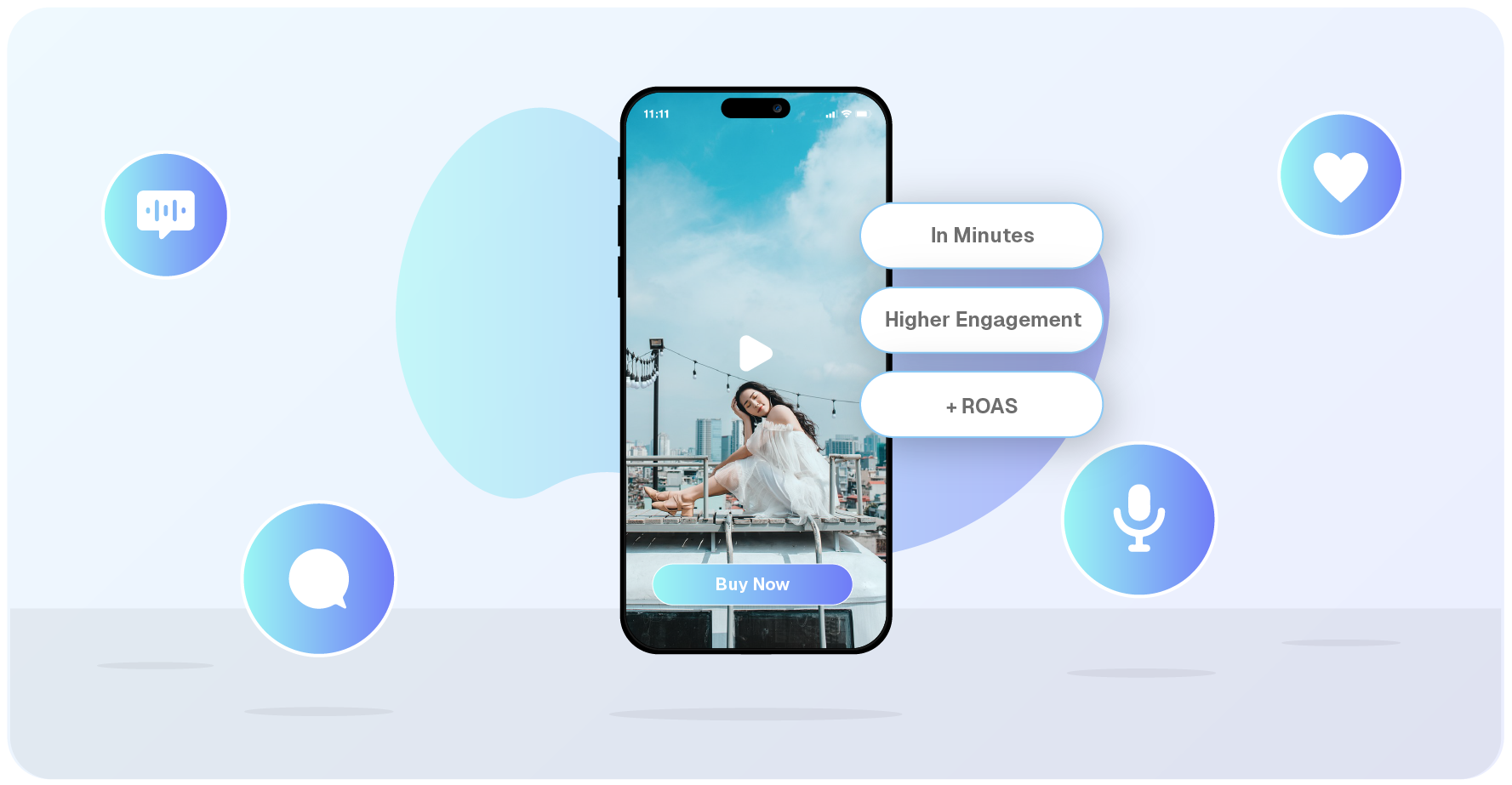
It also allows you to export your video in high quality and adjust it to different social media platforms.
6. Decide Where to Share Your Product Video
Once you've created your product video, the final step is to decide where to share it. The right platform can significantly impact your video's reach and effectiveness. Here are some options to consider:
- Embedding your product video on your product pages.
Platforms like Instagram, Facebook, and TikTok are ideal for sharing short product videos.
- YouTube is excellent for longer product videos, tutorials, reviews, or even Shorts.
- Adding product videos to your email campaigns can boost engagement rates.
- Online marketplaces like Amazon, eBay, or Etsy,
- Paid ads on platforms like Facebook or Google.
By choosing the right platforms to share your product videos, you can reach a wider audience and improve your chances of converting views into sales.
Product Video Types (& Which One Is Best For Your Product)
Different product videos work for different products.
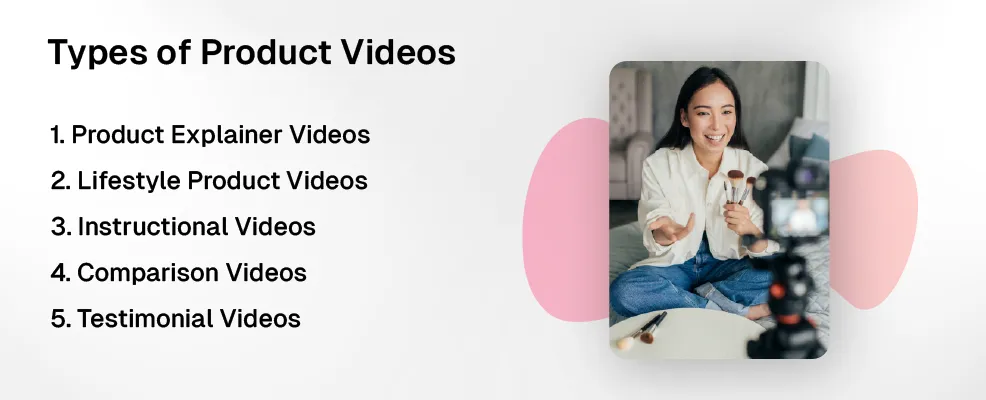
For example, if you're thinking about buying a phone, you probably want detailed information about its features, aesthetics, and benefits to justify your purchase.
But if you're buying something simpler like a shirt, you may just need a few basic pictures and a short description.
Other factors such as – product video length, tone, format, and platform to share may also change based on your product.
Here are some popular product video types to consider based on the products you sell:
1. Product Explainer Videos
Product explainer videos show you how your product works and what makes it special. They help customers understand why they should buy it by explaining how it works.
These types of videos are especially useful for:
- Electronics
- Gadgets
- Household appliances
- Skincare devices
Or any other product where your customers need guidance on using it effectively.
For example, the following product video for a vacuum cleaner explains how it navigates your home and cleans different surfaces.
Since explaining product features takes time, product explainer videos can be around 1-3 mins based on your product.
2. Lifestyle Product Videos
Lifestyle videos show your product being used in real-life situations. They help customers see how the product fits into their daily lives. These videos make it easier for potential buyers to picture themselves using the product.
They are effective for fashion products like clothing and accessories. In these videos, people wear the products in everyday settings, such as walking in a park.
Lifestyle videos often require you to have a human element in them. Hence, the tone of these videos is normally casual and friendly.
However, lifestyle videos shouldn’t be limited to just clothing.
For instance, we’ll use the previous vacuum cleaner example to show how it keeps your home clean and makes the family’s life easier, just like the following ad:
The average length for such videos is around 30 seconds to 2 minutes.
3. Instructional Videos
Instructional videos provide step-by-step guidance on how to use your product. They are designed to help customers understand how to get the most out of what they’re buying. These videos can reduce confusion and enhance the overall customer experience.
These videos are especially useful for products that require assembly, setup, manuals, or specific usage techniques. Hence, the audience for these types of product video ads is very specific.
For example, here’s an instructional video for the IKEA BRIMNES Wardrobe with 3 doors, which walks customers through the assembly process:
If you sell such products, make sure you include it in your product page or upload it on YouTube and share the link on your store.
Because of their nature, these videos can be pretty lengthy. Depending on your product, these product videos can go easily between 9-14 minutes.
The best part about these videos is that they are straightforward and you can completely shoot them by yourself if you know how to use the product.
4. Comparison Videos
Customers look for comparison videos when they’re close to buying a product.
Comparison videos compare your product with a similar product from other brands. Most comparison videos are made for electronic gadgets that carefully compare different features, specifications, versions, aesthetics, price, durability, and multiple other factors.
For example, a comparison video featuring two wireless earbuds may show the differences in sound quality, battery life, and price. You can have a reviewer or yourself review them.
Otherwise, you can use free ready-made templates online to show differences between the products directly.
Here’s an example After Effects animation template for these comparison videos:
Offering a balanced, clear comparison of products shows that you're knowledgeable about the items you sell, positioning you as a trustworthy expert.
Customers will be more likely to come back for future purchases if they feel you're genuinely helping them.
5. Testimonial Videos
We all check product reviews before buying a product. Testimonial videos are just that but in a video format.
Testimonial videos contain a real customer’s positive take on your product. Customers become more comfortable with buying something once they see someone else on their level buying it too.
Testimonial videos act like social proof for them.
The type of testimonial video will change based on the product you sell, for example:
- A testimonial video for shoes can have the customer recording and using the shoes themselves without any commentary.
- Customers who buy electronic products can unbox and show the phone features with a little commentary expressing their perspective.
- Larger products like fitness equipment can have customers showing a combination of the product use and a commentary about how the product changed their lives.
These videos work best on your product page, website, or the reviews section of your product. Here’s an example testimonial video for a laptop:
Testimonial videos shouldn’t look professional. If they feel overly polished, customers might think it's just part of your marketing campaign.
These are some of the prominent product video types. You can use one or a combination of one or more of them for your product videos.
Overall, creating product videos yourself is a smart, budget-friendly approach to engaging customers and boosting conversions.
With the tips in this guide, you’re now equipped to film and edit product videos that resonate with buyers, even with minimal experience.
Want to create high-quality product videos in seconds?
